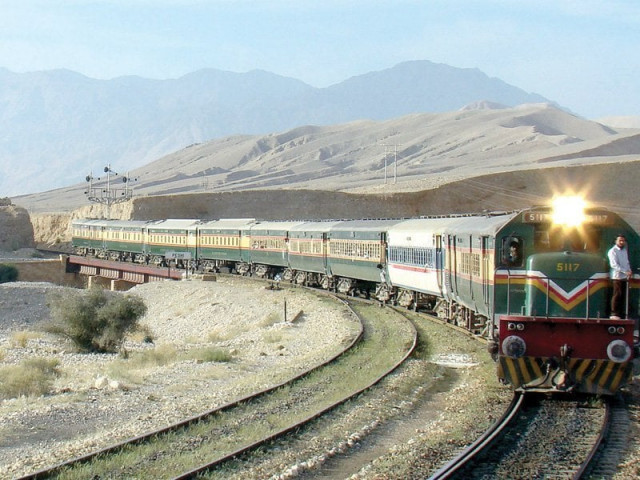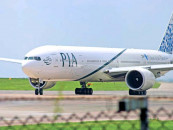Rs124 billion designated for railways
Rs24b earmarked for ongoing, new projects and Rs100b for salaries, pension, operational and non-operational expenses

Rs24b earmarked for ongoing, new projects and Rs100b for salaries, pension, operational and non-operational expenses. PHOTO: FILE
Out of the total amount, Rs24 billion have been earmarked for the execution of 41 ongoing and new projects of Railways Division in the Public Sector Development Programme (PSDP).
Another Rs100 billion have been designated for the salaries and pension of the railways’ employees in addition to the operational and non-operational expenses.
According to the PSDP, Rs12,838.475 million have been earmarked for 23 ongoing projects, out of which Rs 3,250 million have been reserved for procurement and manufacturing of 820 High Capacity Bogie Freight Wagons and 230 passenger coaches.
The government allocated Rs2,700 million for special repair of 100 diesel electric locomotives for improving the reliability and availability of running locomotives.
Similarly, an amount of Rs2,500 million has been earmarked for acquisition of land for Railway Corridor from seaport kilometer 5.25 to 9.00 and railway operation land in Gwadar.
An amount of Rs11,161.525 million has been kept for 18 new schemes, out of which Rs6,000 million would be utilised for up-gradation of Pakistan Railways existing Main Line-I and establishment of Dry Port near Havelian (2018-22) Phase-1, China-Pak Economic Corridor (CPEC).
An amount of Rs1,500 million would be earmarked for operationalisation of train on existing Karachi Circular Railway (KCR) alignment, while Rs450 million have been allocated for rehabilitation of track between Sama Satta-Bahawalnagar on Sama Satta-Amruka section.
The government has planned to make a considerate effort to address the freight share imbalance between road and rail sectors through provision of adequate funding with a focus to improve the reliability and time efficiency.
The project of ML-I upgrdation under CPEC framework will be implemented, said a budgetary document released on Friday.
According to Annual Development Plan, multimodal and integrated system of transport will be developed to economise the cost of travelling and improving the system.
Defence budget up by 11.9% amid tensions with India
A significant shift of freight towards railways to achieve optimal utilisation of its inherent capacity would be necessary to reduce relative transportation costs.
The benefits would be maximised if roads become a preferred means of transport for high-value and short-haul freight and rail network for long-haul and heavy cargo.
The National Transport Policy, 2018 would pave the way for the betterment of the transport network in the country.
An integrated systems approach will be developed during the plan to ensure improved performance of the National Transportation Network.
On one hand, maximum stress will be laid on optimal utilisation of the existing capacity of the system through rehabilitation and better maintenance of assets as well as enforcement of efficient operational techniques and managerial practices, while, on the other, capacity expansion will follow the optimal intermodal traffic allocation.
Availability of required financing for the infrastructure projects has been a problem area, since huge capital costs are involved.
While sufficient PSDP allocations are provided, the available resources cannot meet the demand fully, therefore, government is pursuing new and alternative modes of financing primarily public-private partnership and Build Operate-Transfer modes.
Under Ministry of Communications, an allocation of Rs110.4 billion has been made for NHA, while National Transport Research Centre has been designated Rs0.075 billion.
The PSDP for 2019-20 provides an outlay of Rs184.7 billion for federal programme under transport and logistics sector.
Against this, an expenditure of Rs229.1 billion is expected to be incurred by the end 2019-20, giving an overall utilisation of 124%.
Against an allocation of Rs12.2 billion for 26 schemes of railways, an expenditure of Rs8.3 billion is expected to be incurred during 2019-20, giving utilisation of 68%.
The focus was on the improvement of existing infrastructure, signalling system, and procurement and manufacture of rolling-stock like locomotives including high horse powers locos, coaches, and bogie wagons.
WITH ADDITIONAL INPUT FROM APP



















COMMENTS
Comments are moderated and generally will be posted if they are on-topic and not abusive.
For more information, please see our Comments FAQ